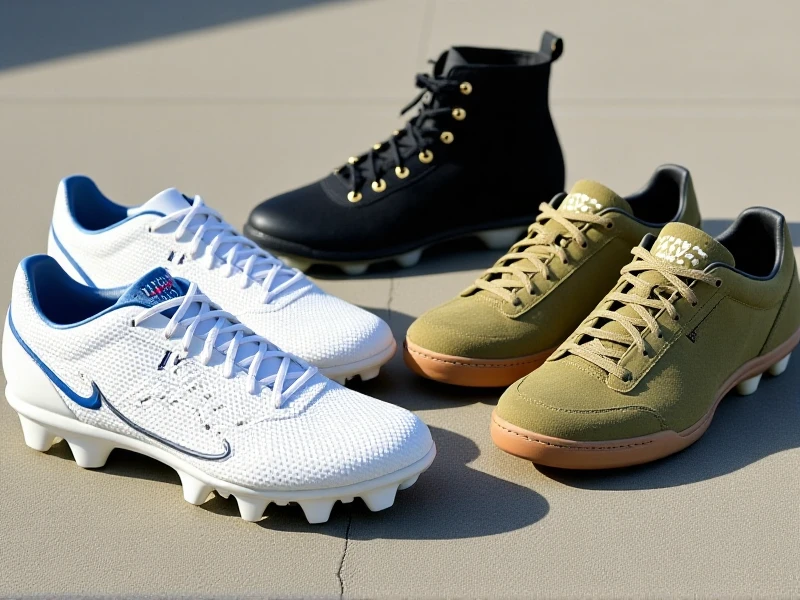Unlock Your Athletic Potential: A Complete Guide to Cleats from Soccer to Baseball

Finding the perfect cleats isn't just about style; it directly impacts your performance, comfort, and safety on the field. Whether you're cutting across a soccer pitch, charging bases, or dominating the lacrosse game, the right cleats provide the essential traction and support your game demands.
The Core Categories: Soccer vs. Baseball Cleats
- Soccer Cleats: Designed for agility on grass, soccer cleats prioritize lightweight construction and ground feel for precise ball control. Typically featuring numerous small, conical studs distributed across the soleplate, they allow rapid changes in direction without compromising stability. Modern soccer cleats often utilize advanced synthetics or premium kangaroo leather for a snug, responsive fit. Molded studs are common for versatility on firm natural grass and artificial turf.
- Baseball Cleats: Baseball players require maximum traction for explosive starts and stops, especially on dirt. Metal cleats offer superior grip on infields and outfield grass but can be dangerous in player collisions and are banned in some youth leagues. Molded plastic cleats, often featuring fewer but strategically placed, larger studs (including a unique toe cleat for the lead foot during pitching/hitting), provide reliable traction and are generally safer and more accessible. Turf shoes are best for artificial surfaces or indoor training.
Choosing Your Perfect Pair: Key Considerations
Don't get overwhelmed by endless options. Focus on these factors:
- Primary Sport/Surface: Soccer on firm, dry grass? Baseball on a mix of dirt and grass? Your main playing surface dictates the cleat stud configuration (conical for multi-direction, larger studs for linear traction) and soleplate material.
- Material Matters:
- Leather (Kangaroo/Synthetic): Offers superb comfort, stretch, and ball feel (soccer focus), but requires more care.
- Synthetic Leather (TPU, PU): Durable, water-resistant, easier to clean, maintains shape.
- Knitted Uppers: Lightweight, breathable, sock-like fit; becoming popular in soccer.
- Terrain/Turf Compatibility:
- Firm Ground (FG): Best for natural firm grass pitches.
- Soft Ground (SG): Longer, often metal studs for muddy/wet natural grass.
- Artificial Ground (AG): Specifically designed for synthetic turf, featuring more numerous, shorter, conical studs to prevent joint stress.
- Turf (TF): Flat rubber studs for artificial turf surfaces or indoor use (also great training shoe).
- Multi-Ground (MG): Versatile option for mixed surfaces.
- Fit and Comfort: This is paramount. Ill-fitting cleats cause blisters and impair performance. Try them on with the socks you play in. Ensure a snug heel lockdown, ample toe wiggle room, and comfortable width. Prioritize lockdown and support.
Cleat Care: Making Your Investment Last
Proper care extends the life of your cleats significantly:
- Clean Promptly: Remove mud and grass with a soft brush and damp cloth after each game. Air dry naturally – avoid direct heat sources like radiators or dryers which warp the materials.
- Stuff and Store: Keep shape by stuffing with crumpled paper towels or shoe trees when drying. Store in a cool, ventilated place.
- Check Stud Wear: Monitor stud length. Worn-down studs drastically reduce traction.
- Respect the Surface: Avoid playing on concrete/asphalt surfaces which shred studs.
Choosing and caring for your cleats wisely empowers you to perform at your peak while reducing injury risk. Understand your sport's demands, prioritize fit over aesthetics, treat your footwear well, and unlock your potential stride by stride. When it’s time for new gear, focus on performance first – great cleats translate directly to great plays.